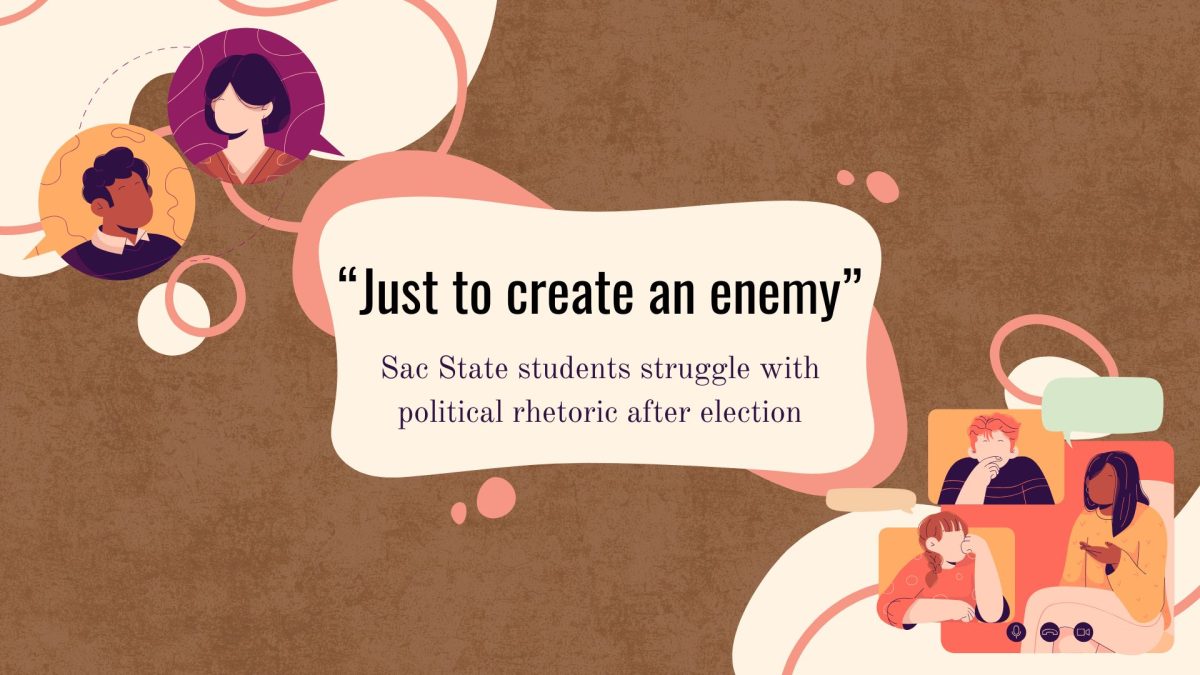Artwork display underappreciated
“Area: Blurring the Lines,” in the Library Gallery, is curated by Andrew Connelly and Robert Ortbal, both professors here at Sac State. :
November 5, 2007
“Area: Blurring the lines” is an eccentric collection of artwork all rolled into one exhibition, and into one room for that matter. Inside the lonely back room called “the main gallery,” the only sign of life is the moving artwork.
The gallery is located inside of the library on campus, so one would think as a result of all of the foot traffic in the building that students would eventually trail in, get curious and check it out, but this wasn’t at all I discovered.
I spent a few hours around the gallery and during that time, I saw one student go into the back room of the gallery, where the exhibit is displayed, but couldn’t have spent more than 20 seconds in there.
Of course those who work in the gallery come and go, but the place was virtually deserted. The show displays the artwork the following artists: Mari Andrews, Ramekon O’Arwisters, Tony Bellaver, Tim Jag and Therese Lahaie.
Mari Andrews has some really creative ocean-inspired installations. Her artwork displayed is a spatial design of what seem to be natural artifacts, such as twigs and stones. She also included some fishing supplies, ropes and wires.
Andrews clearly utilizes the elements of art such as, space, shape, and texture. Her work is very clean, modern and clearly influenced by nature. A smaller version of her installations could be used on the walls of a modern home for decoration.
Tony Bellaver’s work was a bit more confusing to me. His artwork is very abstract and scientific, and very camping inspired. It included some geographic paintings on the wall, a tent, and a bunch of muted speakers attached to a wall.
One thing that I found much unexpected was a small collage of incredible pictures. They are just the standard four by six inch pictures of nature, but I found them the most appealing part of his display. The pictures include many scenes, including stunning views from mountaintops, forests, and other nature shots.
Ramekon O’Arwisters designed a medium sized table that is covered completely by puzzle pieces. In addition to the layers of puzzle are a variety of trinkets, toys, golf balls and even some locks of human hair. Her work is extremely intricate and intriguing; your eyes scan through the table like one was looking for Waldo.
She has a great use of color and uses a variety of forms throughout her work. The explosion of detail displayed on the table is only one of the media she used. Although putting nails through a Kate Spade designer purse could be considered as near sacrilegious in our society, she did it anyways. O’Arwisters is a bit of a risk taker and her alterations to the handbags appears to be expression of her views on consumerism.
Tim Jag has almost an entire wall of neon colored cutouts scattered on the wall, which was well, scattered. The other piece he did that I really appreciated was the tubing installations.
If you’ve ever been to the Museum of Modern Art (MOMA) in San Francisco you could easily see it fitting in with the other works of modern art. Or if you’ve ever been to the Centre Georges Pompidou in Paris, you could visualize this piece as part of the design of the building that makes up the Pompidou. Within this piece Jag shows his appreciation and understanding of movement and light.
Therese Lahaie’s artwork is all about the moves. Lahaie integrates movement, rhythm and unity within her pieces. She clearly is fascinated by movement and touch.
She integrates paintbrushes and Asian design into her work, which is truly original. Rotating mirrors, paintbrushes and pieces of glass are all aspects of her artwork.
One of the employees at the exhibition said that I was visiting on a “slow day”, which could have explained why the place was empty. A free art show with such a variety of work can be a nice escape from the stressful world of school, but some students may find it difficult to attend.
Longer hours and more advertisements could have pulled more students in; 10 a.m. to 5 p.m. during the week is class time for many students.
Kate Jones can be reached at [email protected]






























































































































